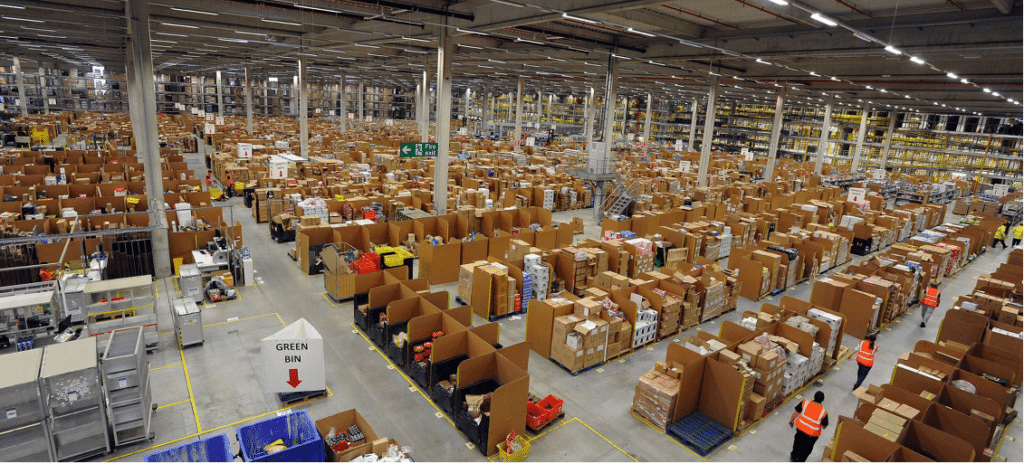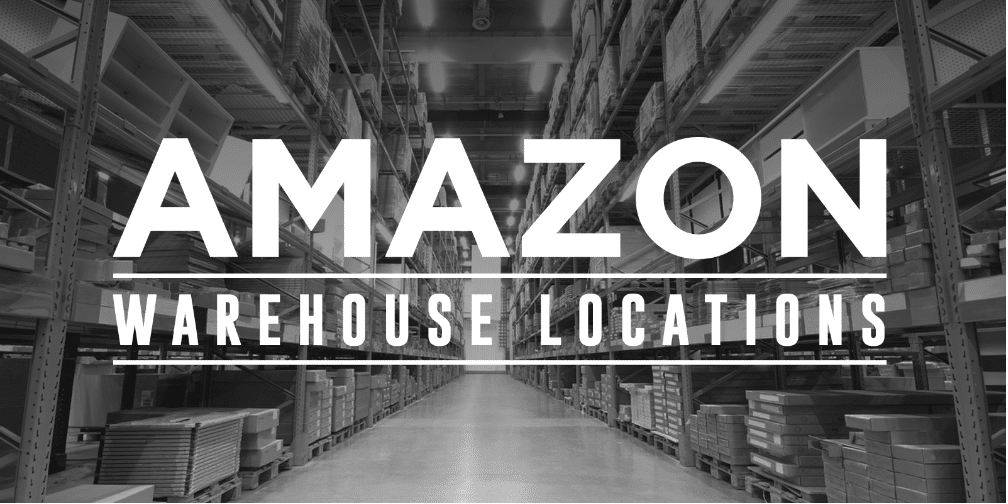Codes for Amazon's Fulfillment Centers

A Guide for Amazon FBA Professionals
Expert advice from Amazon professionals is invaluable. Understanding your warehouse codes is crucial for success as an FBA (Fulfilled By Amazon) seller. It’s essential to gather comprehensive information about Amazon Fulfillment Centers/Warehouse Codes and utilize them to ensure e-commerce success. These codes not only indicate where your inventory is headed but also provide valuable insights. This guide offers essential information, including how an Amazon Agency can optimize your logistics.
Understanding Amazon Fulfillment Centers/Warehouse Codes: Fundamentals of Fulfillment
Why Sellers Should Care
Fulfillment encompasses a range of tasks, including storing, packing, shipping orders, and managing returns. Sellers on Amazon have the option to fulfill orders through FBA or FBM, and many adopt hybrid approaches blending in-house and third-party solutions. Here’s why it’s crucial:
-
- Customer Satisfaction: Exceptional fulfillment directly impacts customer experience and satisfaction.
-
- Buyer Expectations: In the competitive Amazon marketplace, fast and reliable shipping is not just desired but expected.
-
- Prime Eligibility: Utilizing Amazon’s fulfillment centers can help sellers achieve Prime status, unlocking valuable benefits.
-
- Order Accuracy: Efficient fulfillment processes minimize errors, reducing the likelihood of negative reviews or returns.
-
- Brand Reputation: Consistent, on-time delivery enhances a seller’s reputation and fosters trust with customers.
-
- Repeat Business: Satisfied customers are more likely to return for future purchases.
-
- Competitive Advantage: Superior fulfillment can differentiate a seller from competitors and attract more buyers.
-
- Operational Efficiency: Outsourcing fulfillment allows sellers to focus on core business activities and scale their operations effectively.
-
- Global Expansion: Leveraging Amazon’s fulfillment infrastructure facilitates expansion into new markets with ease.
-
- Profitability: Optimized fulfillment can lead to cost savings and increased profitability over time.
Amazon Fulfillment Centers and Warehouse Codes Comprehensive List
If you are unable to display the PDF file then Download instead.
What Amazon Fulfillment Centers and Warehouse Codes Represent
Each Amazon Fulfillment Center is assigned a unique code where products are stored, determined by Amazon based on your shipping plan.
Understanding Amazon Fulfillment Centers
Exceptional fulfillment directly influences customer satisfaction, a key factor in the competitive Amazon marketplace.
Fast and reliable shipping is not just desired but also expected by buyers.
-
- Utilizing Amazon’s Fulfillment Centers can elevate a seller’s status to Prime, unlocking valuable benefits.
-
- Efficient fulfillment processes minimize errors, reducing negative reviews or returns.
-
- Consistent, on-time delivery builds and sustains a seller’s reputation, fostering trust with customers.
Navigating Fulfillment Processes
Once you’ve selected a shipping plan and prepared your products, they’re sent to the assigned fulfillment center.
From there, use your preferred carrier to dispatch them to designated fulfillment centers specified by Amazon.
Initiating the Workflow
Begin by accessing your shipping queue and selecting “Send to Amazon.”.
Proceed through the workflow steps: selecting inventory, packing units, confirming shipping details, printing box labels, and verifying carrier and pallet information for pallet shipments.
Print pallet labels if using an Amazon partnered carrier for pallet shipments.
Amazon Fulfillment Centers and Warehouse Codes: Varieties of Amazon Facilities
Sortable Fulfillment Center:
Covering approximately 800,000 square feet, sortable fulfillment centers can house over 1,500 full-time employees. Within these facilities, designated with Amazon Fulfillment Centers and Warehouse Codes, Amazon personnel engage in the picking, packing, and shipping of diverse customer orders, including items such as books, toys, and housewares. By capitalizing on advancements in Amazon Robotics, associates often collaborate with robots, fostering skill development and enhancing efficiency to meet customer demand effectively.
Non-sortable Fulfillment Center:
Spanning from 600,000 to 1 million square feet, non-sortable fulfillment centers employ over 1,000 full-time associates. Specializing in managing bulky or larger-sized customer items like patio furniture, outdoor equipment, or rugs, these centers handle crucial tasks such as picking, packing, and shipping.
Sortation Centers:
Sortation centers play a pivotal role in organizing customer orders by their final destination and consolidating them onto trucks for expedited delivery. Amazon’s extensive network of sort centers offers a wide array of full- and part-time career opportunities, facilitating everyday delivery services, including beloved Sunday delivery options.
Receive Centers:
Amazon’s receive centers contribute to customer fulfillment by receiving large orders of high-demand inventory types and distributing them to fulfillment centers within the network. These facilities, spanning approximately 600,000 square feet, offer both full- and part-time roles to bolster efficient operations.
Specialty Buildings:
Complementing the core fulfillment network, specialty buildings handle specific categories of items or provide support during peak periods like the holiday season. Many of these structures offer part-time employment opportunities, with the potential for conversion to full-time positions.
Delivery Stations:
Within these facilities, customer orders undergo preparation for last-mile delivery. Amazon’s delivery providers play a crucial role in facilitating fast and reliable everyday shipping services.
Amazon Fulfillment Centers and Warehouse Codes: FBA Charges
Inventory Storage Fees:
The fee calculation depends on the average daily inventory volume measured in cubic feet, requiring an understanding of product size tiers for accurate assessment.
Long-term Storage Fees:
These fees are assessed on a monthly basis for items stored in a fulfillment center beyond 365 days.
Fulfillment Fees:
Applied per unit for various fulfillment tasks, including order picking, packing, shipping, handling, customer service, and managing product returns.
Unplanned Services Fees:
These fees are imposed when inventory arrives at a fulfillment center lacking proper preparation or labeling, necessitating unplanned services.
Removal Order Fees:
This option allows Amazon to return or dispose of your inventory in a fulfillment center, subject to a per-item fee.
Returns Processing Fees:
Applicable to orders where Amazon provides customers with free return shipping services.
Amazon Fulfillment Centers / Warehouse Codes: Extending Beyond Sending Items to Amazon Facilities
The primary objective of a prosperous Amazon seller is to establish a sustainable and flourishing business by harmonizing profit with delivering a positive customer experience and adhering to platform guidelines. Consequently, familiarity with Amazon Fulfillment Centers / Warehouse Codes represents merely the beginning of the journey.
Success on the Amazon marketplace hinges on various factors, including diligence and strategic planning.
Sellers have the option to either handle everything independently or collaborate with a dependable Amazon Agency, enabling them to divert their focus to other aspects of the business.

How an Amazon Agency Can Assist FBA Sellers; Before Sending Items to Amazon
Optimizing Listings:
Work alongside the Amazon agency to enhance product listings through keyword research, content creation, and A/B testing, aiming to boost visibility and conversion rates.
Managing PPC Campaigns:
Enlist the Amazon agency to oversee PPC campaigns, encompassing keyword research, bid optimization, and analysis of ad performance to maximize ROI and sales.
Managing Inventory:
Leverage the expertise of the Amazon agency to optimize inventory levels, avoid stockouts, and minimize storage costs through advanced forecasting and replenishment strategies.
Negotiating with Suppliers:
Tap into the network and proficiency of the Amazon agency to negotiate favorable terms with suppliers and ensure timely delivery of inventory.
Conducting Market Research and Strategy:
Further, utilize market research conducted by the Amazon FBA agency to identify opportunities, assess competition, and devise strategic plans for product positioning and pricing.
After Sending Items to Amazon
Tracking and Managing Shipments:
Moreover, monitor shipment tracking information and oversee inbound shipments to Amazon fulfillment centers, ensuring prompt delivery and efficient processing.
Reconciling Inventory:
Besides, verify inventory quantities, reconcile any discrepancies, and manage inventory levels to prevent stockouts or excess inventory.
Monitoring and optimizing performance:
Although, regularly assess sales performance, track key metrics, and refine strategies based on data insights to enhance overall performance and profitability.
Managing Customer Service and Feedback:
Meanwhile, handle customer feedback and reviews, promptly address inquiries and concerns, and implement strategies to enhance customer satisfaction and seller ratings.
Planning for Replenishment:
Moreover, collaborate with the SAECOM FBA PRO to strategize inventory replenishment based on sales trends, demand forecasts, and seasonal fluctuations, ensuring continuous product availability for customers.
By partnering with an Amazon expert such as the Guru of Amazon FBA, Saad Ahmed,. FBA sellers can access expert guidance, strategic insights, and customized solutions to navigate the complexities of selling on Amazon and optimize their success.


